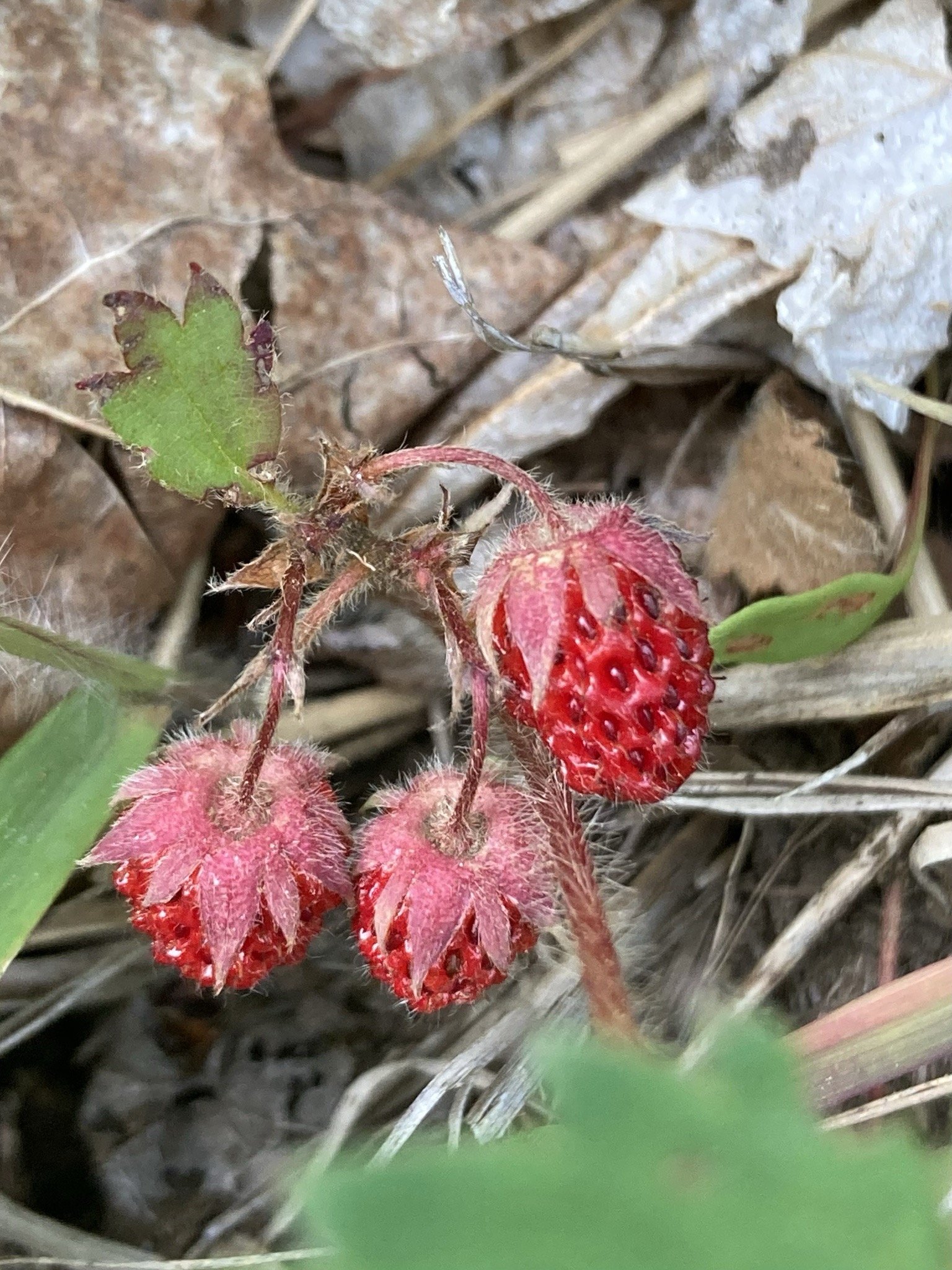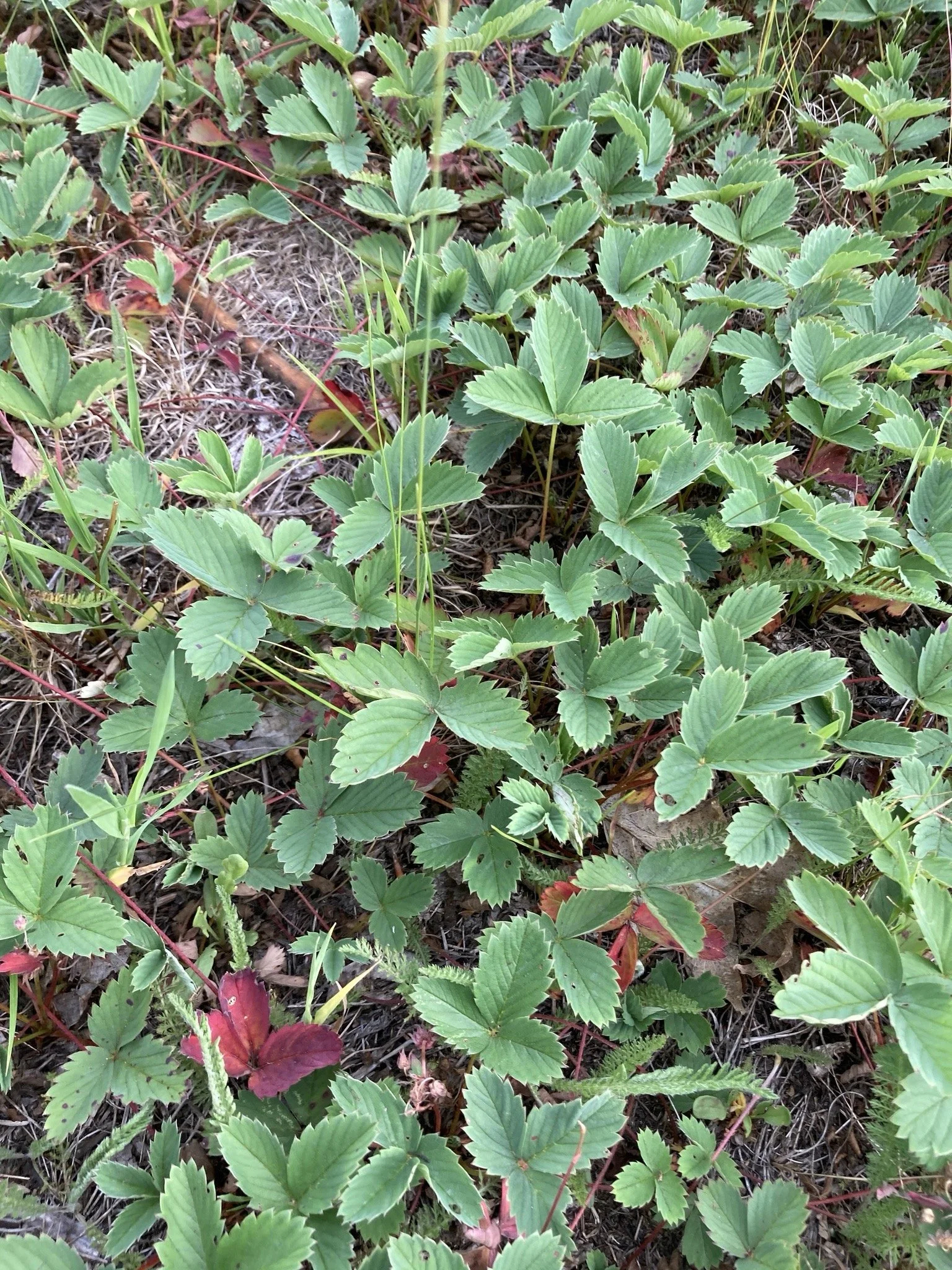“The plant has in fact been up all night assembling little packets of sugar and seeds and fragrance and color, because when it does so its evolutionary fitness is increased. When it is successful in enticing an animal such as me to disperse its fruit, its genes for making yumminess are passed on to ensuing generations with a higher frequency than those of the plant whose berries were inferior. The berries made by the plant shape the behaviors of the dispersers and have adaptive consequences.
What I mean of course is that our human relationship with strawberries is transformed by our choice of perspective. It is human perception that makes the world a gift. When we view the world this way, strawberries and humans alike are transformed. The relationship of gratitude and reciprocity thus developed can increase the evolutionary fitness of both plant and animal.”
Photo Credit: er-birds, Flora White, Ken Larsen, Matthew Zappa, David McCorquodale on iNaturalist
https://www.inaturalist.org/observations/83794936
https://www.inaturalist.org/photos/382205025
https://www.inaturalist.org/photos/372086599






